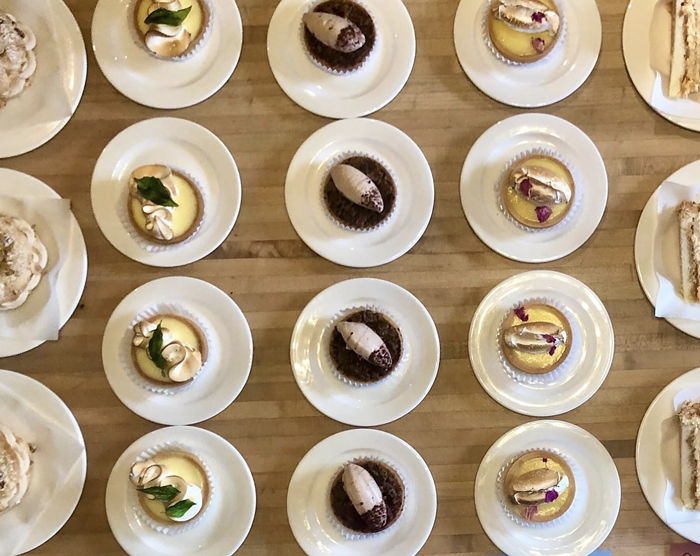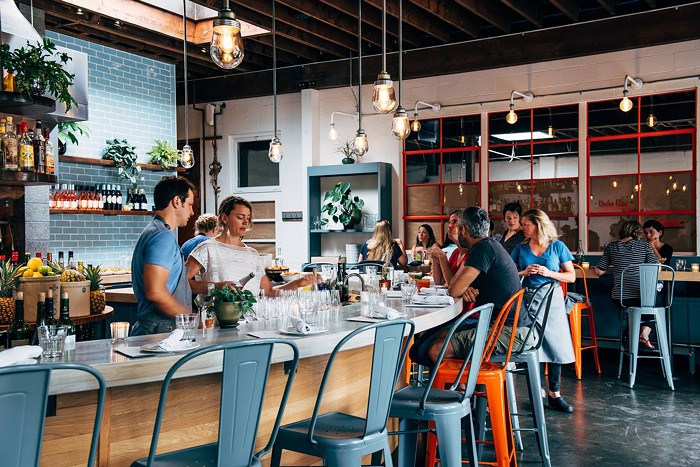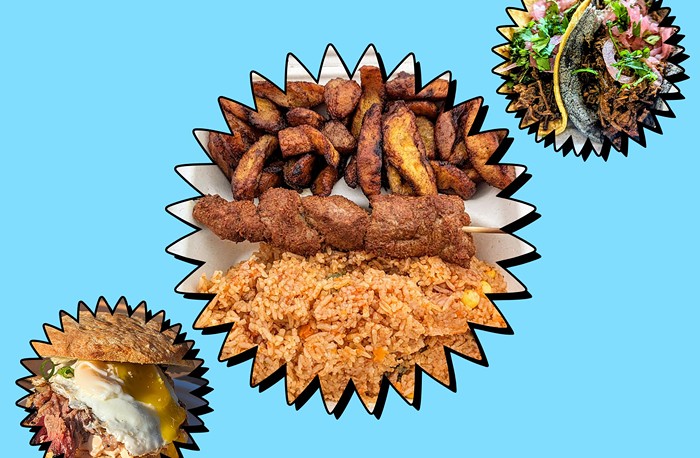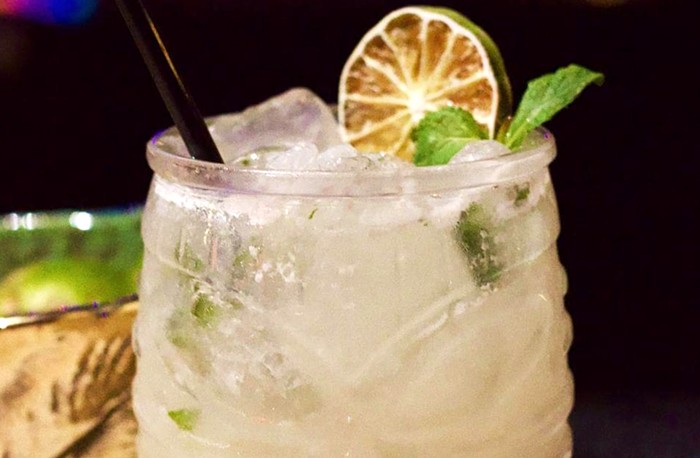One of the more culturally damaging things James Bond ever did—you know, aside from portraying women like disposable sex dolls and equating suave masculinity with chilly sociopathic violence—was that martini order: six parts vodka, one part vermouth. Or maybe it was Alfred Hitchcock, who wanted his martini with "five parts gin and a quick glance at a bottle of vermouth." Or Winston Churchill's alleged recipe: 15 parts gin and bow in the direction of France.
"I blame James Bond. I think it was the British who fucked everything up. They like everything booze-forward. But vermouth was actually the original base for many things," says Jermaine Whitehead, bar manager for Bar Melusine, where the drink list skews heavily toward fortified-wine cocktails. He's among a growing group of Seattle bartenders who are pushing vermouth and sherry to the forefront of cocktails, instead of using them as bit players.
For Whitehead, twisting those ratios in classic cocktails is an easy way to initiate new drinkers: "Whenever someone says, 'Make me a cocktail that's on the lighter side or goes well with my food,' you can just increase the vermouth. Do 60/40 or 70/30." Indeed, the original recipe for a martini called for equal parts vermouth and spirits. The Martinez called for two parts vermouth to one part gin.
Vermouth and sherry are nothing new, of course. Everyone has tasted the two-year-old bottle of Martini & Rossi vermouth sitting in their parents' cocktail bar, each miniscule pour a gesture more to gentility than taste: Mom's having a martini tonight, not a big glass of vodka. Both sherry and vermouth are fortified wines, though, meaning they're lightly spiked with spirits (and in the case of vermouth, aromatized with botanicals), which extends their shelf life a bit. But once opened, they still oxidize.
"It's the best way to turn someone off of something, when you have the worst quality of it," says Whitehead of the old and low-quality vermouths that many people are accustomed to. "Same with a sherry that's been sitting out a long time."
And lately, instead of budget vermouths, local barkeeps have started stocking an array—Dolin, Mancino, Punt e Mes—that sometimes work their way onto the wine list. See the eight types offered straight at Damn the Weather, including the more obscure Spanish Yzaguirre vermouth. Or the three offered at neighborhood bar Jude's Old Town in Rainier Beach. Or the sprawling sherry list at Spanish-themed, closet-sized JarrBar.
Amanda Reed—beverage director at Heartwood Provisions—was turned on to fortified-wine cocktails for some of the same reasons as Whitehead: Compared with other spirits, or the medicinal bitterness of amari, fortified wines make easy food companions, especially with lighter flavored seafood dishes. At Heartwood, Reed pairs cocktails explicitly with meals on the menu, and after a brief period of fumbling with more standard spirit-based drinks, she realized that lower-proof cocktails usually made more sense. "I look at it more as a garnish," Reed says, "to enhance the flavors of the food instead of overpowering the food. I started working with all kinds of wine products and using spirits kind of in the way you use liqueurs."
Reed says a recent uptick in the variety of vermouths and sherries available in Seattle from newer importers has partly allowed bartenders to showcase them better in cocktails.
So now at Heartwood, a dish like octopus with tallow potatoes—something that might get smashed beneath a martini's boozy weight—instead gets a pairing like Manzanilla sherry, Dolin Blanc vermouth, and green Chartreuse.
The newest pusher of aperitifs is L'Oursin, where co-owner and bar manager Zac Overman figures fortified-wine drinks compose about half the cocktail menu. Here, as at Melusine and Heartwood, aperitif cocktails function similar to the small-plate menu. You can come in and try three or four things without exhausting your taste buds or ending up wasted (but since most still run from $9 to $13, and many drinks contain maybe half the alcohol of a martini-style drink, a cheap, quick buzz it patently is not). Overman figures that drinkers in the city are beginning to react a degree to the "big, dark, boozy speakeasy thing that's been happening for 15 years now."
"I think people are starting to realize that if they want to have a nice meal, it's maybe not smart to have two martinis to begin with. You can try more drinks if they're lighter, and you get more bang for your buck in the long run, if you're more about the experience than getting hammered."
And although he figures maybe half of customers still want something more traditional like a manhattan, he's found a lot of customers open to fortified wines. Indeed, it mimics the way many drinkers are approaching booze, from the 3 percent alcohol table beers that are popping up at places like Holy Mountain to light high-acid wines edging out big jammy cabernets.
"I think people are becoming more conscious of their drinking habits, and lots of folks—not just bartenders—are starting to be more responsible with what they're putting in a glass. Instead of just obliterating people, which I did for a long time."
Four to Try
Alsatian Cousin at L'Oursin: Manzanilla sherry and blanc vermouth, all botanical technicolor, balance out a tiny but potent hit of pear brandy. It drinks less like a cocktail and more like a heady vibrant wine.
Distant Shore at Bar Melusine: Lemony brightness and almondy Manzanilla sherry collide and are rounded out by chamomile and a glimmer of gin in the background. Come on a hot day, sit by the window, and nurse it in the sun. But beware: Like many Melusine drinks, it costs $12 and is gone in about a dozen sips.
Deslonde's Revenge at Jude's Old Town: A lightly New Orleans–themed neighborhood joint with a fake-copper bar, a booze slushy machine rotating jovially in the corner, and a menu heavy on sandwiches and po'boys might be the last place you'd expect to find bartenders slinging vermouth cocktails. But for Deslonde's Revenge, the very friendly bartenders here mix Yzaguirre dry vermouth with Mancino Bianco, a double hit of bitters (rhubarb and Peychaud's), and some prosecco—the result is clear, complex, and savory.
Americano at Heartwood Provisions: The Negroni gets a lot of love—even, absurdly, its own week—but its classic aperitif sibling, the Americano (substitute soda water for gin), is a first-rate refresher. At Heartwood, bartenders trade out Campari for the more delicate, vermouth-like Rinomato Aperitivo and mix it with their house blend vermouth: Dolin, Punt e Mes, and Mancino. And, hey, an Americano is the first drink James Bond ever ordered on the page. Maybe he wasn't so bad for vermouth after all. ![]()



















